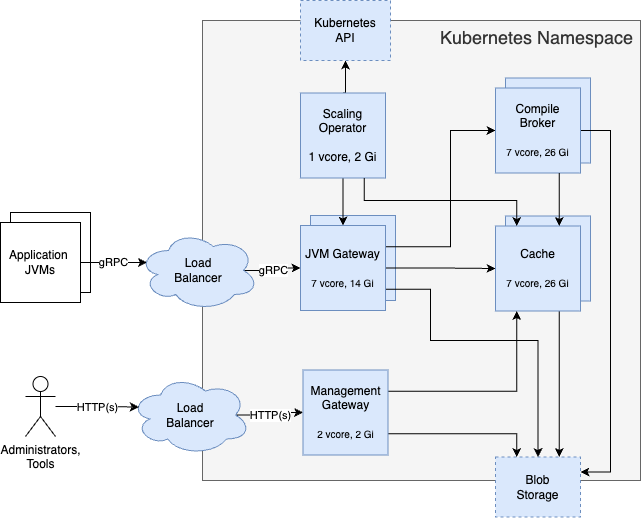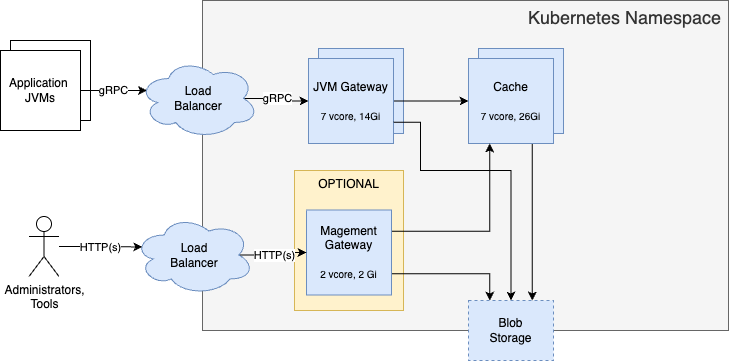
Optimizer Hub Architecture Overview
Optimizer Hub is shipped as a Helm chart and a set of Docker images to be deployed into a Kubernetes cluster. The Helm chart deploys different components based on the use case.
Architecture Overview
Optimizer Hub offers two deployment options: a full installation of all components or a ReadyNow Orchestrator-only installation.
Full Installation
In a full installation, all Optimizer Hub components are available and gateway, compile-broker, and cache are scaled when needed.

Remarks:
-
All services use one pod, except Cache uses two pods by default.
-
The load balancer is either your own solution (recommended), or the optional
gw-proxyincluded in Optimizer Hub. See Configuring Optimizer Hub Host for more info.
High Availability of Optimizer Hub
Optimizer Hub is designed with High Availability (HA) as a fundamental architectural principle:
-
The system architecture prioritizes continuous update and service reliability.
-
Built-in redundancy at multiple levels ensures business continuity.
High Availability in Clusters
HA is guaranteed inside and between clusters.
Inside a Cluster
The nodes inside the Optimizer Hub service have failover built-in:
-
Automatic redistribution of workload when a node fails.
-
The system maintains full functionality even if individual nodes crash.
-
A seamless transition between nodes prevents service interruption.
Between Clusters
HA is also integrated in configurations with multiple clusters:
-
Clusters have health check endpoints to declare their readiness to accept traffic.
-
You can add a DNS-based load balancer or service mesh to route the requests to the nearest available cluster.
-
Custers can sync important information.
High Availability Configuration
Follow these recommendations to ensure High Availability (HA) of Optimizer Hub.
-
Install multiple instances of the Optimizer Hub service, for example, one per region of availability zone.
-
Front the Optimizer Hub service with either:
-
A DNS-based load balancer (i.e. Amazon Route 53)
-
Kubernetes service mesh (i.e. Istio)
-
See Configuring Optimizer Hub Host > Host for High Availability and Failover for more info.
-
-
Let the clients connect to the load balancer or service mesh.
-
Use the health check APIs to only route requests to instances that are ready to handle traffic.
-
Route the requests to the Optimizer Hub service that is nearest to the JVMs.
|
Note
|
Cloud Native Compiler artifacts are not synced. They can be easily regenerated without compromising application performance. |
